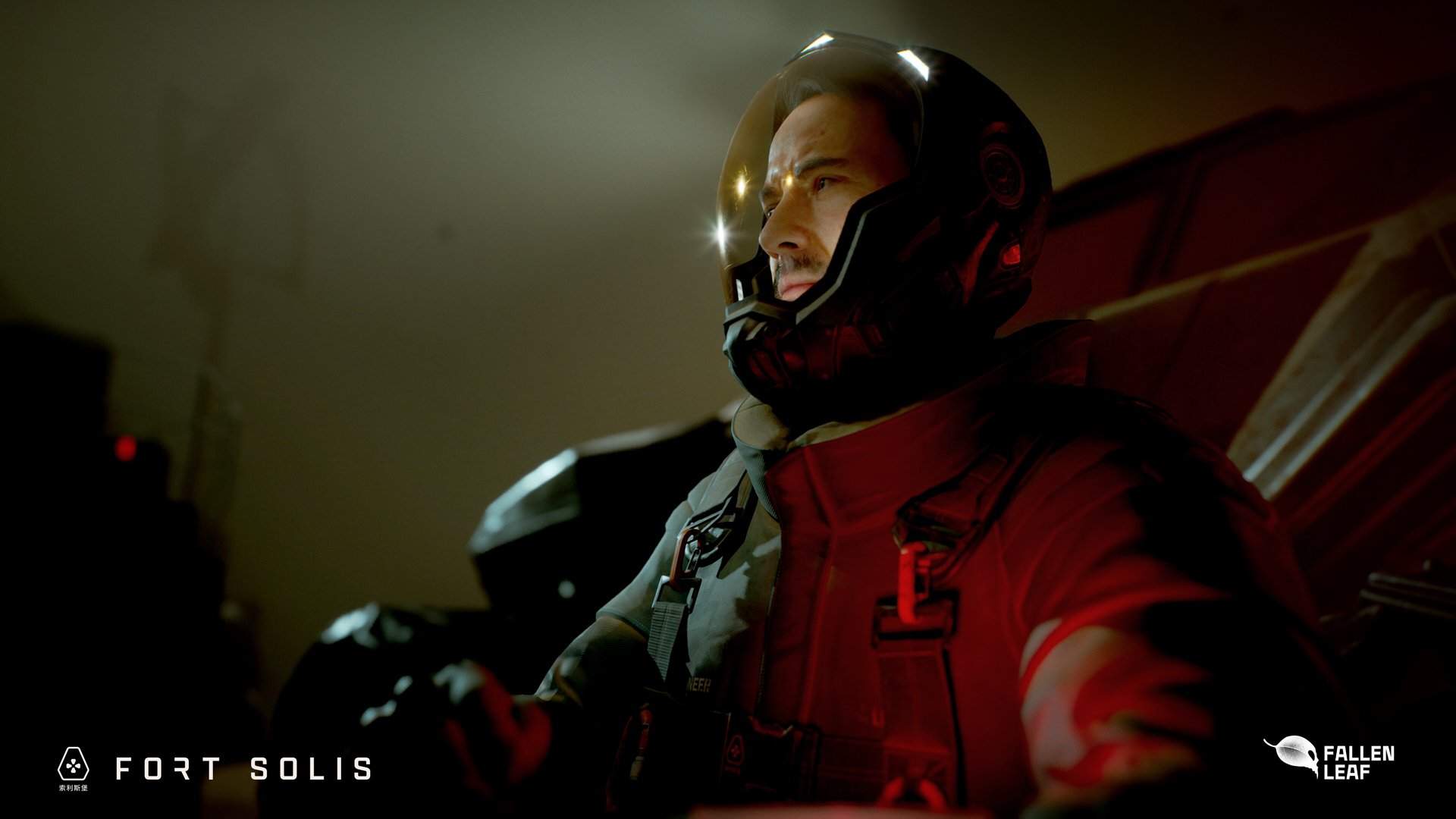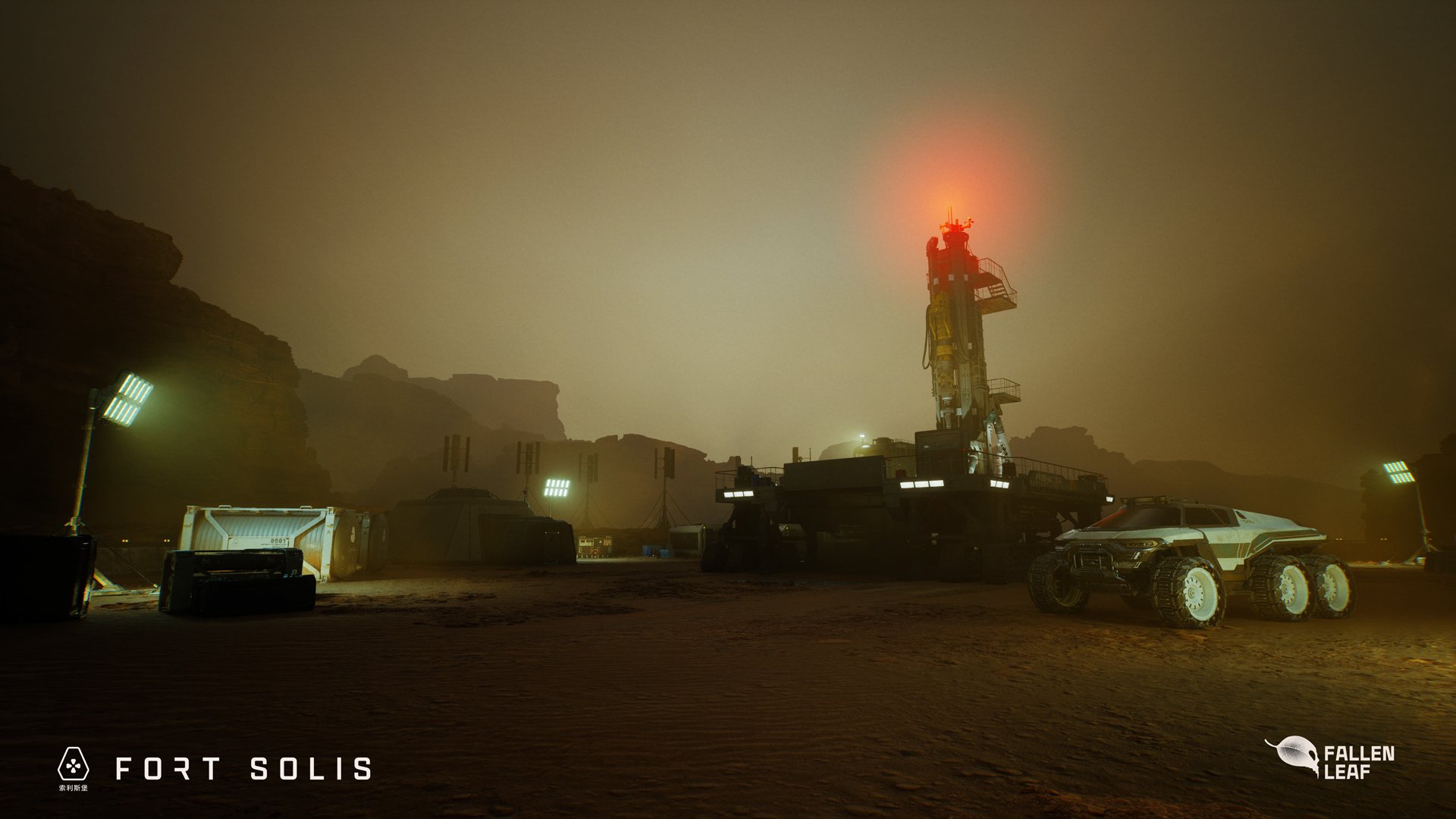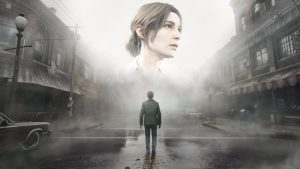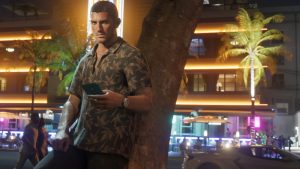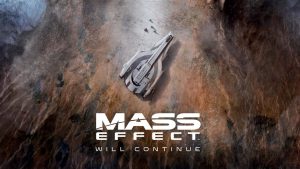
Since the moment it was first revealed, Fort Solis has looked like an intriguing prospect, and with each new showing, it’s continued to look increasingly promising. Touting a narrative-driven cinematic adventure in a setting with horror and mystery vibes, Fort Solis is promising complete immersion in its sci-fi storytelling experience, which has been more than enough cause for excitement for a fair few people, especially thanks to a handful of big-name actors attached to the project. Set to launch sometime later this year, recently, we reached out to its developers with some of our questions about what will make Fort Solis tick, and what players should expect from its narrative, setting, characters, and more. Continue reading for our interview with game director James Tinsdale.
"Early in the process we gravitated towards horror elements to help reflect the events and emotion of the evening, but as the game developed it felt much more natural to move towards a mystery thriller tone. This helped retain focus on our character development and their progression in relation to the events of the narrative rather than queuing up jump scares to help relieve tension."
Clearly, Fort Solis is blending horror with its sci-fi setting, but what’s the style of horror that the game is attempting? Is it a story that very much puts an emphasis on where its central mystery is concerned, or would you describe it as primarily a character-driven tale that also features some horror elements?
When we first set out to build the theme and tone of Fort Solis, we focused on finding moments and atmosphere that best served as a companion to the narrative. We isolated our biggest moments and looked further at other media to help associate how the presentation should be blended.
Early in the process we gravitated towards horror elements to help reflect the events and emotion of the evening, but as the game developed it felt much more natural to move towards a mystery thriller tone. This helped retain focus on our character development and their progression in relation to the events of the narrative rather than queuing up jump scares to help relieve tension.
Our emphasis remains on the central mystery and understanding the motivations behind the characters’ actions rather than presenting horror moments. That’s not to say there isn’t an accompanying tone, we just felt through dialogue and character action, those moments can be much more gratifying when delivered through the backdrop of the tone rather than bringing it to focus.
What can you tell us about Fort Solis’ choice and consequence mechanics? What kind of decisions will players be making throughout the experience, and how radically will the story be altered based on those choices?
When we originally looked at choice and consequence within Fort Solis, we started down a path of exploring multiple outcomes and options. We spent time looking at the value of multiple outcomes and how that could add or dilute our core story.
We decided to move more in the direction of The Last of Us or God of War where player input results in an action relative to that choice, but it doesn’t create branching narratives. We wanted to tell a tight story and one that’s focused on delivering the tone and beats we set out to make. With this in mind, we do not have narrative trees or dialogue options. We feel this is Jack’s story, just like Joel in the hospital in The Last of Us, during our biggest moments we wanted Jack to act true to his character and for it to remain his story.
With no HUD, no camera cuts, and no load screens, Fort Solis is putting a great deal of emphasis on immersing players in its world and its story. How challenging has it been to consistently execute on those ideas throughout the experience and ensure that it’s a single, seamless experience?
We set out to make a game that took the existing narrative genre and moved it closer to the production of Netflix, Amazon, or any of our favourite streaming service shows. Within the game industry medium we have the tool of immersion at our disposal and it’s something we really wanted to maximise through our systems.
With no HUD, camera cuts or load screens we challenged ourselves to create an experience that immerses players in the story and the events unfolding in front of them. We wanted everything to be present physically in the world. Content can be consumed within the world space via the Multi Tool device. We want the player to live in the world as Jack does and create logical boundaries to his capabilities and surroundings. This helps further ground the character in the role of an engineer whilst adding to the immersion of the experience.
A great example would be Silent Hill’s P.T. You are simply walking through a corridor but the fact you must instigate that action adds a level of tension and suspense that film or TV can’t provide. We wanted to capture that feeling at every opportunity throughout Fort Solis.
"With no HUD, camera cuts or load screens we challenged ourselves to create an experience that immerses players in the story and the events unfolding in front of them. We wanted everything to be present physically in the world."
Starring the likes of Roger Clark, Troy Baker, and Julia Brown, Fort Solis boasts an impressive cast of actors. What has the experience of working with them been like, and what have they brought to the table where their characters and the story are concerned?
From the very start of the journey, we knew that the story we wanted to tell was intense and at its core, very human. We had to reach out and speak to actors we knew could not only handle the source material but ultimately iterate, bring more to it, and perhaps even leave a piece of themselves in Fort Solis.
Roger already had a lead role in Read Dead Redemption 2, with his background in theatre we knew that he was a perfect choice. I really love theatre and even in the darkest moments, theatre actors always find relatable ways to show humility to live crowds. This is something that comes across in Roger’s voice perfectly. It was fantastic to work with Roger on Jack’s body language, expressions, reactions, even the weight of his walk.
Beyond our lead role we knew we wanted to add someone who could bring Jess alive whether it’s on comms or elsewhere. Julia initially auditioned for the role with such energy and tenacity it really felt like I was talking to Jess. So much so we used Julia’s likeness and original accent.
Having already worked on TV, Julia really understood what we were trying to achieve and where we wanted to go. Working with her at the mocap shoot was a great experience. I will always look back and feel how much Julia helped improve our game and bring the performance to life. The way Julia was able to work with Roger and elevate our scenes really created something special that I can’t wait to share later this year.
Once we had the core cast, we had to add our last piece. Troy is a phenomenal actor and someone we really felt could take on our most conflicted character Wyatt Taylor. Troy’s vast experience over several amazing roles helped not only shape the character over the years but add empathy to a vessel in a way we hadn’t planned for previously. From talking medical jargon, to stunts, to calls throughout the project, Troy was able to really come together with Roger and Julia and create a special dynamic that as a director, is such a humbling experience.
I couldn’t be prouder of the cast and their performances. Where we landed is pretty special and I can’t wait for others to witness it!
Where the gameplay is concerned, how is the game structured? Will it be presented to players as a series of levels, or does it adopt a more freeform approach that puts an emphasis on exploration?
The game has a traditional chapter structure in terms of progression, but the location is always open form. All chapters occur at the Fort Solis location and the journey of Jack will take the player throughout all locations. The base itself is fully open whilst not immediately, the player will have to discover how to progress through the lower levels and emerge at the surface.
The structure follows similar paths as The Last of Us or God of War but obviously on a much smaller scale. We allow the player to explore the whole location. Doors will be locked, environments will be puzzles, and various other aspects have the aim of keeping the tension and story moving along. Players are free to explore, gain materials, and participate in interactions at each location. They can even revisit rooms and areas later at their leisure to grab missed content. We are embracing the freeform approach and inviting players to investigate the mystery at their own pace.
What should players expect from Fort Solis where things such as its combat and puzzles are concerned?
Combat and puzzles are always a tricky pacing tool when dealing with the narrative genre. Having too many or too difficult puzzles can become frustrating and immersion breaking. Too much combat dilutes the seriousness of the more intense moments. So, you must look for a balance.
In terms of systems, we have no combat systems. We have physical altercations throughout the game, but they will play out with player participation. This is hopefully designed to make them more meaningful when they do occur, as well as more impactful. They serve to further the story and add stakes to the characters.
Our puzzles are applied to logical moments and can be something as simple as finding power to a door, turning on servers, or more complex moments. These exist to make the mundane feel immersive. This comes back to our core concept of immersing players in this very realised world and trying to add practicality to Jack’s actions.
"I couldn’t be prouder of the cast and their performances. Where we landed is pretty special and I can’t wait for others to witness it."
Roughly how long will an average playthrough of the game be?
As an indie development team, we must be realistic about our resources and budget. It would be great to flesh out a 20-hour experience, but the game has been designed with scope in mind from the beginning. We always wanted to make something that felt in keeping with the shows we consume at home. Whether that’s in one night, two sittings or more, players will feel like they just finished a show.
Hopefully once the player has finished Fort Solis they feel the quality, storytelling, and performance was a great time investment. A lot of time went into figuring out how long the experience should be? How long can you watch a show without it overstaying its welcome? I think we landed in a really great place with other titles within our genre like Stray.
We placed a big emphasis on quality over quantity, and felt we landed in a great place reflective of something like the Chernobyl series, running around 4-5 hours.
After announcing it as a PC title, you recently confirmed that Fort Solis will also be launching for PS5. Do you have plans to eventually bring the game to Xbox as well?
We are always looking to bring Fort Solis to any and every audience we can. We recently announced the title will be coming to Mac and we will continue to work with external partners to explore avenues and platforms for future releases.








